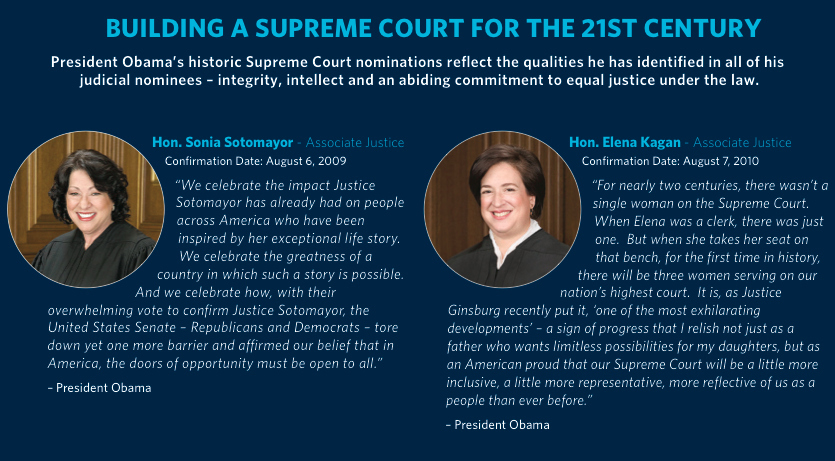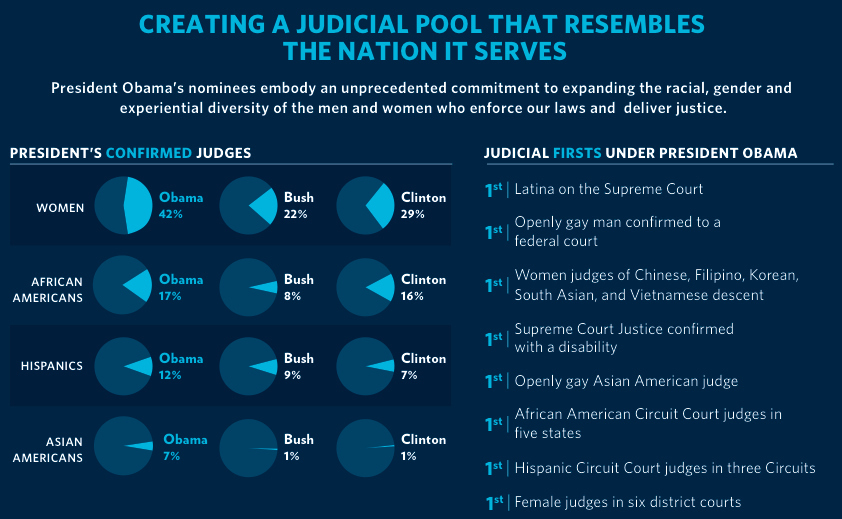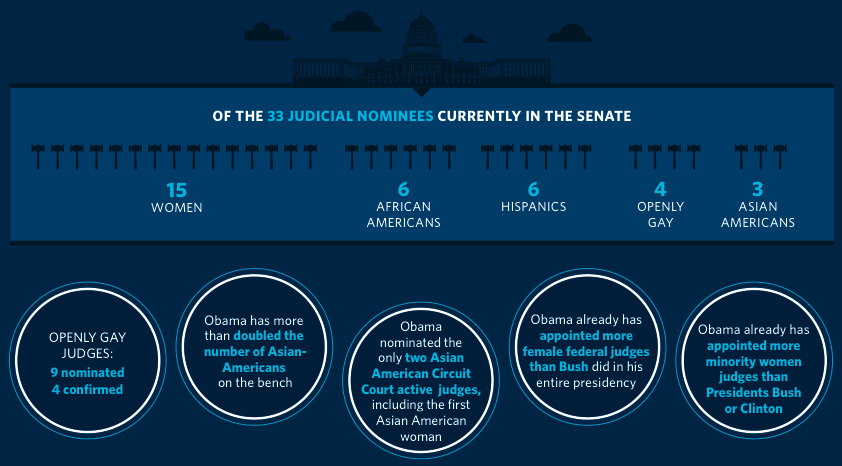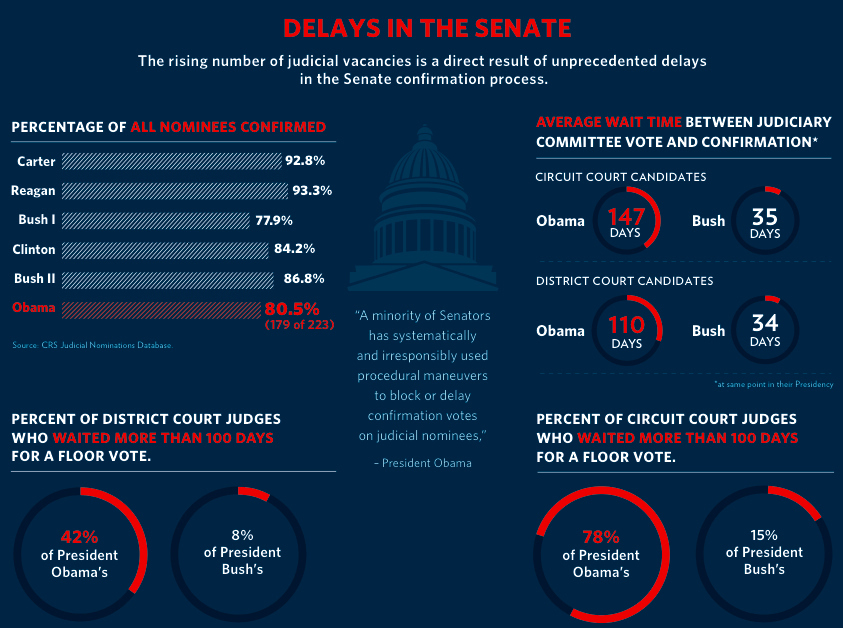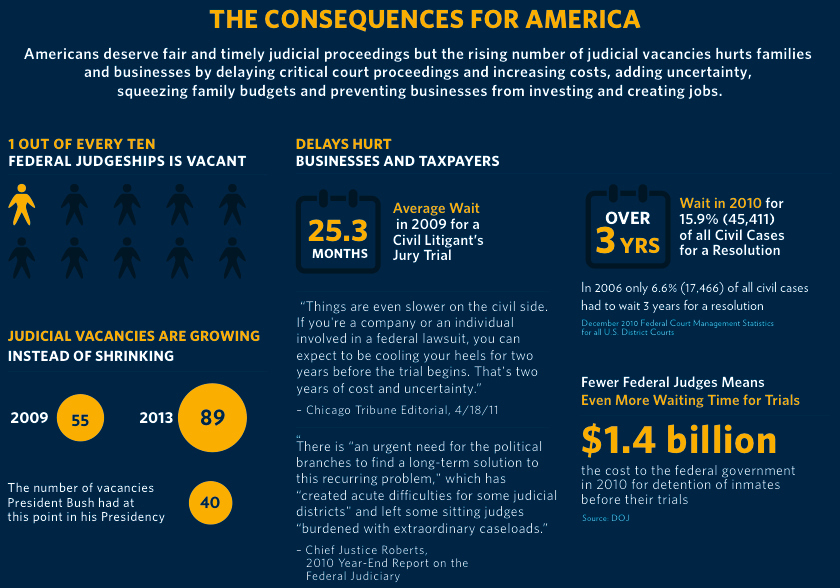
WASHINGTON — Although Supreme Court nominees are all over the news when vacancies occur at the high court, appeals court nominees — who represent smaller portions of the country but frequently have the final say because the Supreme Court hears fewer than 100 cases a year — rarely capture the public's attention.
President Obama's administration, like administrations before it, would like that to change.
A cloture vote is expected Wednesday on D.C. Circuit Court of Appeals nominee Caitlin Halligan, whose nomination didn't go to a vote in the previous Congress. And the White House is hoping that it will be able to draw enough attention so that it can pressure Republicans into allowing a final vote on her nomination.
The 60-vote threshold was forced by Republicans, and Majority Leader Harry Reid filed the cloture petition setting up Wednesday's vote.
The court is considered one of the most important appeals courts in the nation, hearing important agency and administrative appeals. Moreover, the court's judges — particularly younger ones — are almost always considered among potential Supreme Court nominees for future high court vacancies.
When Halligan's nomination was considered in December 2011, Republicans blocked the nomination with a 54-45 vote, with Sen. Orrin Hatch voting present. Sen. Lisa Murkowski was the sole Republican to vote for cloture, and she was joined by Independent Sen. Joseph Lieberman.
After the Senate vote, Obama said in a statement, "Ms. Halligan has the experience, integrity, and judgment to serve with distinction on this court, and she has broad bipartisan support from the legal and law enforcement communities. But today, her nomination fell victim to the Republican pattern of obstructionism that puts party ahead of country."
Halligan had served as a law clerk to D.C. Circuit Judge Patricia M. Wald and Supreme Court Justice Stephen G. Breyer. She later spent a decade working in the New York Attorney General's Office, the last five years of which she served as solicitor general, the state's top appellate lawyer.
Although there were criticisms of Halligan's substantive positions taken as a lawyer, administration officials point to statements made at that time about the need for the judgeship to be filled as a changed circumstance.
The ranking Republican member of the Senate Judiciary Committee, Sen. Chuck Grassley, for example, said in December 2011, "[W]e should be having a discussion on reducing the staffing for this court, not filling a vacancy. This seat is not a judicial emergency." Sen. Lindsey Graham echoed that contention to Roll Call.
Since that time, though, another vacancy has been added to the court, meaning that only seven of the court's 11 authorized judgeships are filled. The administration notes that with those vacancies — a vacancy rate of 36% — the court of appeals has never been this understaffed.
According to statistics provided Tuesday by the White House, the caseload for each active judge has increased almost 15 percent since the Senate considered Halligan's nomination in 2011 and more than 21 percent since President George W. Bush nominated Peter Keisler to the court in 2006. There are 188 pending cases for each active judge on the D.C. Circuit currently, according to the administration, compared to 164 in 2011 and 155 in 2006.
"Senator Grassley's concerns about her qualifications haven't changed, no matter how many vacancies there are," Grassley communications director Beth Levine told BuzzFeed Tuesday.
An email seeking comment from Graham's office was not immediately returned late Tuesday afternoon.
Following the Senate's approval Monday night of the nation's first out lesbian Asian-American judge, Pamela Chen, on a voice vote, the White House released an extensive graphic detailing the diversity of President Obama's judicial nominees and the Senate course to confirmation that they have faced.

